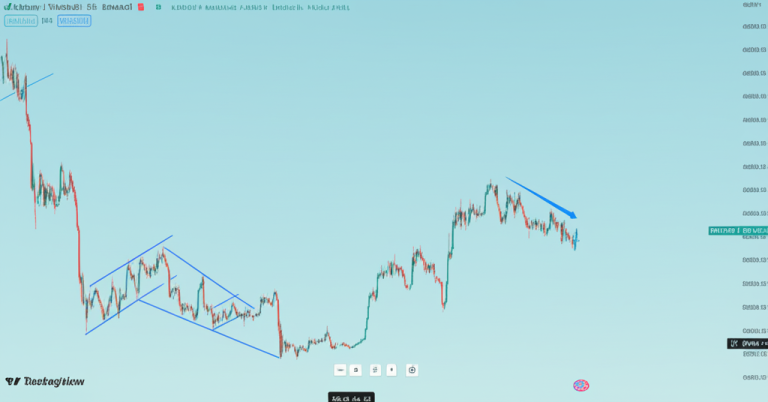The announcement that dYdX plans to enter the United States by the end of 2025 has ignited a wave of discussion across the DeFi ecosystem. As a leading decentralized perpetual contract platform, dYdX has built a reputation on marrying non-custodial principles with high-performance trading experiences. Its move toward the U.S. market is not merely a geographic expansion; it represents a test case for whether a non-custodial, on-chain settlement model can scale within one of the world’s most demanding regulatory and liquidity environments. To assess the implications, it’s essential to unpack the market positioning, technology edge, regulatory hurdles, strategic playbook, and the broader potential impact on the crypto-trading landscape.
Market Positioning and Technological Edge
dYdX has carved out a distinctive niche within the DeFi space by focusing on perpetual contracts and other derivative products that traders typically associate with centralized venues. The platform emphasizes non-custodial asset control, transparent trading mechanics, and a trustless settlement architecture. This design paradigm aligns well with the fundamental DeFi value proposition: users retain ownership of their funds, and smart contract logic enforces the terms of the trade without relying on a single intermediary.
Recent developments illustrate the platform’s drive to blur the line between DeFi and traditional exchange usability. In October 2025, dYdX rolled out Surge Season 7, a liquidity- and user-experience-centric initiative that included 100% trading fee rebates for front-end users and a substantial reward pool of one million dollars. Such incentives are not merely cosmetic; they signal a strategic push to accelerate user onboarding, deepen liquidity pools, and demonstrate the platform’s capability to sustain high-throughput trading without compromising the core non-custodial narrative. For traders, the payoff is twofold: lower all-in costs and the potential for enhanced execution quality through improved liquidity provisioning.
From a technical perspective, dYdX has been steadily refining the execution layer to rival centralized exchanges on speed, reliability, and cost. The emphasis on near-instant recharge (deposit efficiency), low-latency trade execution, and robust uptime under high load points to a mature engineering mindset. In the DeFi arena, where gas costs, network congestion, and counterparty risk can erode user experience, such improvements are not optional luxuries—they are prerequisites for broad adoption, especially among professional and institutional traders who demand consistent, predictable performance.
The U.S. market’s particular demands—advanced trading tools, sophisticated risk controls, and a clear regulatory posture—mean that dYdX’s technical advantages must translate into a replicable, regulated product that can withstand scrutiny from multiple agencies while preserving the frictionless ethos of decentralization. If the platform can maintain speed and reliability at scale while delivering a transparent, auditable trading environment, it stands a strong chance of earning a share of the U.S. market’s sophisticated audience.
Regulatory Landscape and U.S.-Specific Challenges
Entering the U.S. market introduces a new spectrum of regulatory considerations that differ markedly from other jurisdictions. Historically, dYdX faced restrictions on serving U.S. residents, largely due to the complex regulatory overlay governing derivatives, securities, and digital assets. The decision to pursue a U.S. footprint by 2025-end signals a willingness to navigate this regulatory labyrinth, but it also imposes a rigorous operational discipline.
Key regulatory dimensions shaping this trajectory include:
– Regulatory scope and classification: The United States treats many digital asset activities through multiple lenses—securities, commodities, and banking-like services. Perpetual contracts and other derivatives could attract scrutiny under both the Securities Act and the Commodity Exchange Act, depending on asset class, product structure, and the specific trading features offered. The challenge is to delineate a product suite that minimizes the risk of being recategorized as securities trading platforms or unregistered exchanges while preserving the decentralized, non-custodial design.
– Compliance architecture: KYC (Know Your Customer) and AML (Anti-Money Laundering) frameworks are stringent in the U.S. Market participants must implement robust identity verification, ongoing transaction monitoring, and suspicious-activity reporting. For a decentralized platform, translating these expectations into practical, scalable controls—without compromising user sovereignty—will require careful design, possibly involving U.S.-domiciled legal entities, licensed corridors for customer onboarding, and transparent governance mechanisms that regulators can audit.
– Licensing and supervision: Regulatory pathways may involve state-level considerations (e.g., money services business registrations, broker-dealer equivalents, or commodity trading advisor frameworks) in addition to federal oversight. The need for clear licensing structures across the U.S. landscape could drive a multi-jurisdictional approach, with centralized compliance functions and independent risk controls to demonstrate ongoing governance.
– Market integrity and security: The U.S. regulator community emphasizes market surveillance, anti-manipulation measures, and strong cyber hygiene. dYdX’s architecture will need to prove resilience against front-running, latency arbitrage, and other exploit vectors while ensuring that its off-chain on-chain mechanics do not introduce new risk vectors for users.
– Investor protection and disclosures: Given the sophistication of U.S. market participants, there may be expectations around disclosures, risk warnings, and product governance. Clear documentation around product risk, liquidity risk, settlement timelines, and potential conflicts of interest will be vital to maintain trust with a broad audience, from retail traders to institutions.
Operational readiness for these regulatory realities hinges on proactive engagement with U.S. regulators, partners, and stakeholders. A feasible path could involve establishing a U.S.-compliant subsidiary, implementing stringent KYC/AML controls, and designing product features that align with regulatory expectations while preserving the platform’s core non-custodial advantages. The goal is not only legality but credibility: a demonstrable willingness to operate transparently within a robust governance framework.
Strategic Blueprint for US Market Entry
To translate regulatory ambition into commercial reality, dYdX will likely pursue a multi-layered strategy that blends compliance, innovation, and ecosystem development. Key components of this playbook include:
– Compliance-first entry: Create a legally compliant operating entity tailored to U.S. law, with dedicated compliance, legal, and risk management teams. Implement hardened KYC/AML programs, transaction monitoring, and suspicious-activity reporting aligned with federal standards. Establish clear customer identification procedures, data retention policies, and privacy safeguards that satisfy regulatory expectations and user privacy concerns.
– Product and user experience adaptation: While preserving the non-custodial, decentralized foundations, optimize the product for U.S. users through localized onboarding flows, responsive customer support, and improved risk controls. Maintain high-speed execution while ensuring that trading incentives (such as fee rebates) are structured in ways that align with regulatory expectations and scalability requirements.
– Technology defensibility and security: Invest in robust security audits, formal verifications for critical contracts, and transparent incident response protocols. Strengthen liquidity resilience through diversified liquidity providers, robust market-making partnerships, and on-chain risk controls that minimize outages or outages-related losses during peak periods.
– Ecosystem and governance expansion: Leverage dYdX’s decentralization ethos to foster a vibrant ecosystem. Engage developers with accessible APIs, sample codes, and documentation; create community-governed parameters for certain risk controls; and cultivate institutional liquidity partnerships to ensure depth across major trading pairs and time zones.
– Regulatory engagement and advocacy: Establish ongoing dialogue with relevant regulatory bodies and industry groups to shape a pragmatic path for compliant growth. Transparent communication about product capabilities, risk management, and funding structures can help build trust with regulators and users alike.
– Competitive differentiation: In a market crowded with established centralized exchanges and other DeFi platforms, dYdX can differentiate on the combination of non-custodial reliability, transparent settlement, and superior Derivatives trading experience. Emphasizing the security and sovereignty of user funds, the platform can appeal to sophisticated traders who prize control over assets and verifiable execution quality.
Market Outlook and Token Dynamics
Market sentiment around dYdX has shown moments of optimism, with native token dynamics reflecting investor expectations for growth opportunities in the U.S. market and broader adoption of decentralized derivatives. A disciplined, compliant entry that preserves the platform’s core advantages could catalyze user growth, liquidity expansion, and further unlock the potential of institutional participation in a non-custodial framework.
However, the path to scale in the U.S. is not guaranteed to be linear. Regulatory clarity, state-level enforcement actions, and competitive responses from incumbents could influence pace and profitability. Investors and traders should watch for signals such as:
– Regulatory milestones: Progress in licensing, approvals, and clear guidelines affecting derivatives platforms, stablecoin usage, and on-chain settlement.
– Liquidity and volume trends: Depth of order books, latency metrics, and cross-border liquidity partnerships that support reliable execution during high-volatility periods.
– User education and risk awareness: The effectiveness of communications around product risk, leverage, and margin requirements, which impact adoption rates and long-term retention.
– Token economics and incentives: The sustainability of fee rebates, reward pools, and any governance token emissions in a way that aligns long-term user value with platform health.
The broader takeaway is that a successful U.S. entry hinges on translating technical excellence and user-centric design into regulatory credibility and scalable liquidity. If dYdX can achieve that balance, the platform could reinforce the trend toward mainstreaming decentralized trading while preserving the core benefits that differentiate it from both traditional CEXs and other DeFi protocols.
Risk Landscape and Mitigation Considerations
Any strategic expedition into a new jurisdiction comes with a spectrum of risks, and the U.S. path is particularly nuanced. Several risk categories deserve careful attention:
– Regulatory risk: A shifting policy environment could require rapid product or operational adjustments. Mitigation includes proactive regulatory engagement, flexible product design, and conservative risk controls.
– Compliance risk: Gaps in KYC/AML implementation or reporting could trigger enforcement actions. Mitigation involves implementing robust, auditable processes and third-party verifications where appropriate.
– Operational risk: System outages, catastrophic security incidents, or cross-border data handling challenges could erode user trust. Mitigation includes rigorous incident response planning, redundancy, and continuous security testing.
– Market risk: High volatility on perpetual contracts could expose users to amplified leverage and sudden liquidations. Mitigation involves transparent risk disclosures, prudent risk management tools, and responsible leverage caps for certain user cohorts.
– Competitive risk: The U.S. market features strong incumbents with substantial liquidity and regulatory experience. Mitigation requires differentiating through non-custodial integrity, improved UX, and compelling liquidity economics.
– Reputational risk: Any misstep in compliance or security can have outsized consequences in a market where trust is paramount. Mitigation requires transparent communication, swift remediation, and independent audits.
Conclusion: A Transitional Moment for Decentralized Trading
The plan to enter the U.S. market by the end of 2025 places dYdX at a pivotal crossroads where technology, governance, and due regulatory diligence converge. If executed thoughtfully, the move could serve as a reference case for how decentralized derivatives platforms can coexist with a rigorous U.S. financial framework while preserving core decentralization advantages. The potential impact extends beyond dYdX itself: a successful U.S. launch could accelerate the broader education of mainstream traders about non-custodial trading, spur further investment in L2 and off-chain/on-chain orchestration for derivatives, and catalyze deeper liquidity across the DeFi ecosystem.
In this evolving landscape, the most enduring trend is clear—the future of digital asset markets will be defined not solely by clever smart contracts or flashy incentives, but by the ability to integrate robust risk controls, transparent governance, and regulatory legitimacy into trading experiences that rival traditional venues. If dYdX can align its technical prowess with disciplined compliance and strategic ecosystem development, it stands to help usher in a new era where decentralized trading becomes a trusted, scalable, and mainstream facet of global finance.
資料來源:
[1] www.dydx.xyz
[2] www.ainvest.com
[4] www.dydx.xyz
Powered By YOHO AI





